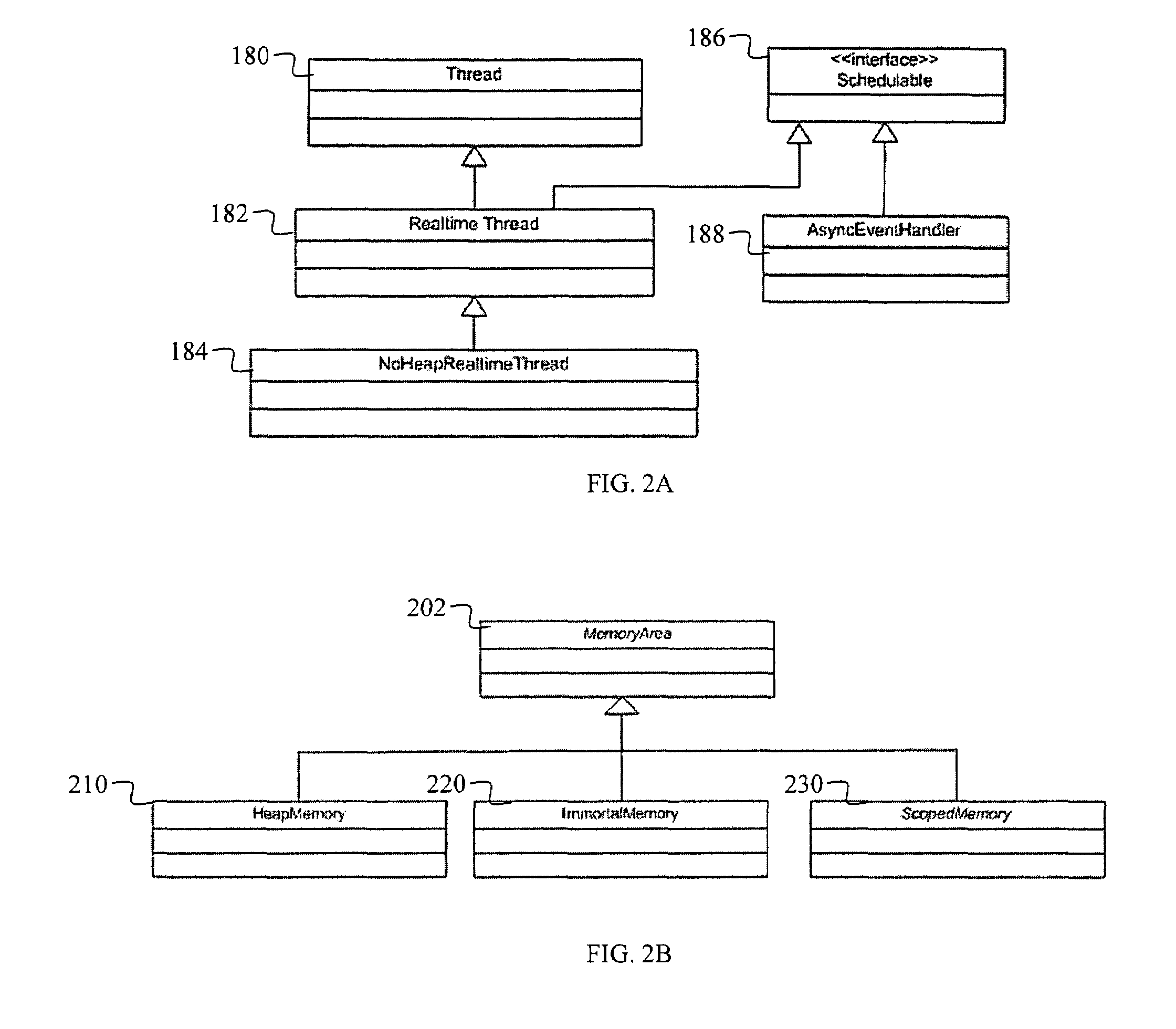Multiple code sets for multiple execution contexts
a technology of multiple execution contexts and code sets, applied in the field of multiple code sets for multiple execution contexts, can solve the problems of increasing the execution time of code, running the most code slower than the compiler, and requiring checks
- Summary
- Abstract
- Description
- Claims
- Application Information
AI Technical Summary
Benefits of technology
Problems solved by technology
Method used
Image
Examples
Embodiment Construction
[0041]A description of preferred embodiments of the invention follows.
System Architecture
[0042]Preferably, the invention is implemented in a real-time software or hardware environment. The real-time software or hardware environment works with the Real-Time Operating System (RTOS) and uses a Java virtual machine (JVM) to translate Java bytecodes into the native language of the system's processor. One such environment using an interpreter 120 is shown in FIG. 1.
[0043]The compiler 102 translates Java source code 100 into a class file 104. When the class loader 114 loads the class file 104, it receives a stream of bytecodes for each method in the class. The bytecode streams are stored in the method area of the JVM 112. The bytecodes for a method are executed when that method is invoked during the course of running the Java program. They can be executed by an interpreter 120, just-in-time compiler, ahead-of-time compiler, or any other technique compatible with the JVM 112.
[0044]A method'...
PUM
 Login to View More
Login to View More Abstract
Description
Claims
Application Information
 Login to View More
Login to View More - R&D
- Intellectual Property
- Life Sciences
- Materials
- Tech Scout
- Unparalleled Data Quality
- Higher Quality Content
- 60% Fewer Hallucinations
Browse by: Latest US Patents, China's latest patents, Technical Efficacy Thesaurus, Application Domain, Technology Topic, Popular Technical Reports.
© 2025 PatSnap. All rights reserved.Legal|Privacy policy|Modern Slavery Act Transparency Statement|Sitemap|About US| Contact US: help@patsnap.com



